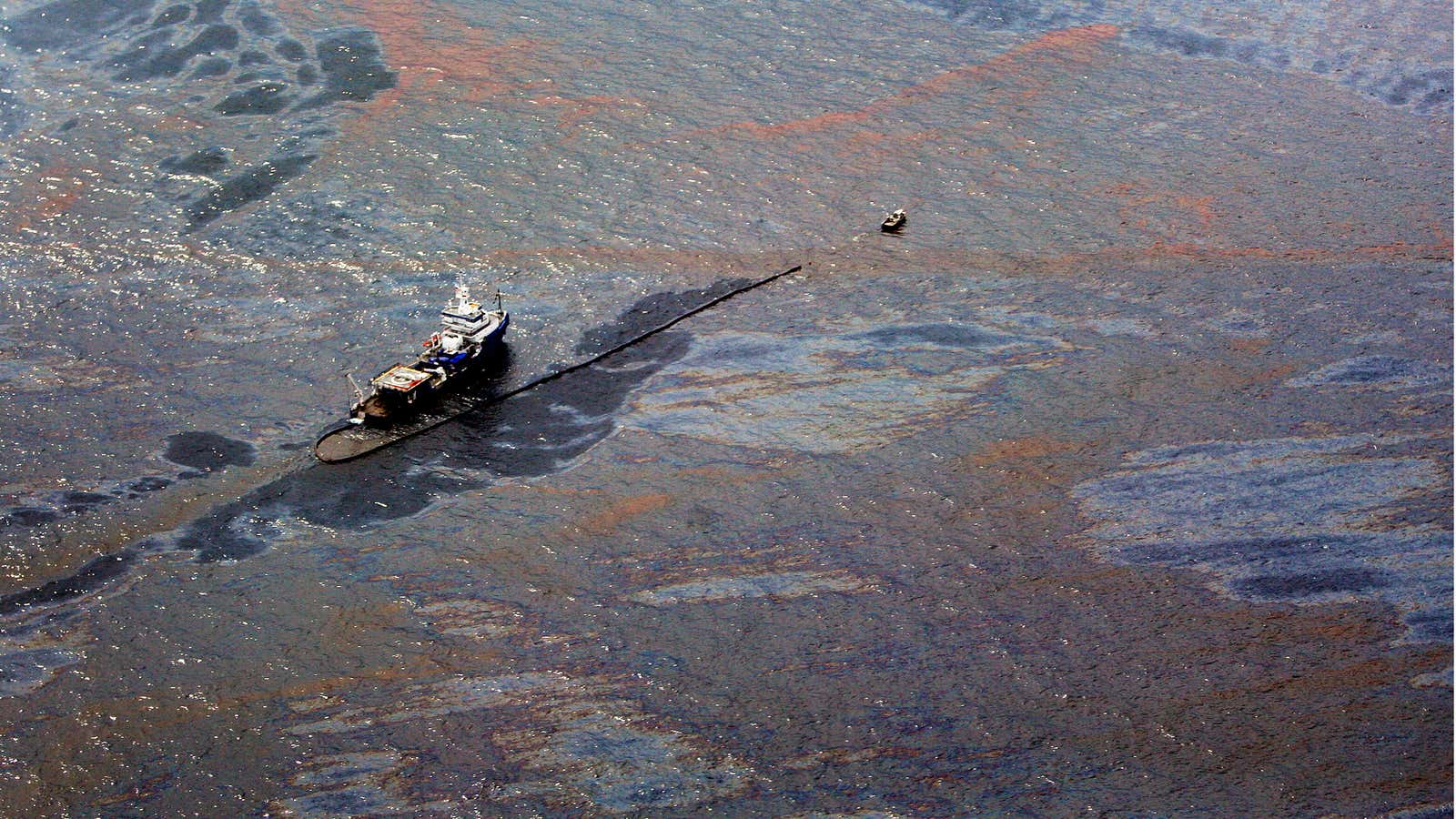On April 20, 2010, the Deepwater Horizon oil rig, owned by BP, exploded in the Gulf of Mexico. In addition to killing 11 crew members, it unleashed about 3.19 million barrels of oil a mile below the ocean surface over the course of 87 days before the leak could be contained.
Five years later, BP agreed to pay the US federal government and state governments of Florida, Louisiana, Alabama, Mississippi, and Texas a total of $18.7 billion for damages. They paid billions more in criminal charge penalties (including for 12 felonies for negligence and failure to disclose information to Congress) and payouts to private individuals. It was the largest settlement ever for a corporation, and perhaps rightly so for a disaster that has left the Gulf marine and coastline ecosystems in disarray.
But there is one silver lining: After the spill, BP executives recognized that they didn’t have enough information about the environment in which they were extracting oil.
Never before had there been a spill of that magnitude in the Gulf of Mexico (the 1979 Ixtoc 1 spill only released about half as much oil), which made it difficult to truly assess how bad the damage was. So, in 2010 BP voluntarily committed to giving $500 million to a board of 20 independent researchers over the course of 10 years to provide BP with unbiased answers to all of their questions about the Gulf’s marine environment. The Gulf of Mexico Research Initiative (GoMRI) was formed. (In similar fashion, ExxonMobil contracted scientists after their oil tanker crashed and spewed millions of gallons of oil off the coast of Alaska in 1989, although the effort wasn’t as organized.)
Over the past seven years, GoMRI, chaired by oceanographer Rita Colwell (who is affiliated with both Johns Hopkins University and the University of Maryland and once directed the National Science Foundation) has allocated resources to projects ranging from understanding the physics of oil droplets spewing out of wells to figuring out how chemicals in oil change fish sex hormones. It also set aside some funding to figure out just what creatures live in the Gulf of Mexico anyway.
“So far we have identified over 60 species of fishes that have not been previously found in the Gulf, and of these at least seven are undescribed species,” Tracey Sutton, an oceanographer at Nova Southeastern University working on GoMRI, said in an email. An “undescribed species” is one that’s never been seen before, anywhere.
Scientists working on the project, called the Deepend Consortium, are sending nets down up to 1,500 meters (almost a mile) into the ocean and collecting the animals that get caught in them.
Heather Judkins, a biological oceanographer at the University of South Florida at St. Petersburg also working on the project, says they’ve found at least two entirely new species of squid, and another cephalopod previously thought only to live in other parts of the Atlantic ocean. She and her team still need to compare DNA sequences of the animals to existing animal genome databases to confirm that these animals are, in fact, novel. Although they look unique, they could be examples of previously known species with different physical characteristics.
Judkins points out that in some ways these discoveries are unsurprising, since 95% of the world’s oceans are still unexplored. If scientists want to understand the damages the oil industry may cause to the deep ocean, they’re going to have to get a baseline reading of life there first.
Although scientists are uncovering some new forms of life, even massive populations of these 60 new species would barely put a dent in all the marine life the oil spill definitively killed. Estimates suggest that 80,000 birds, 35,000 hatchling sea turtles, and over 500 million pounds of oysters were lost.
